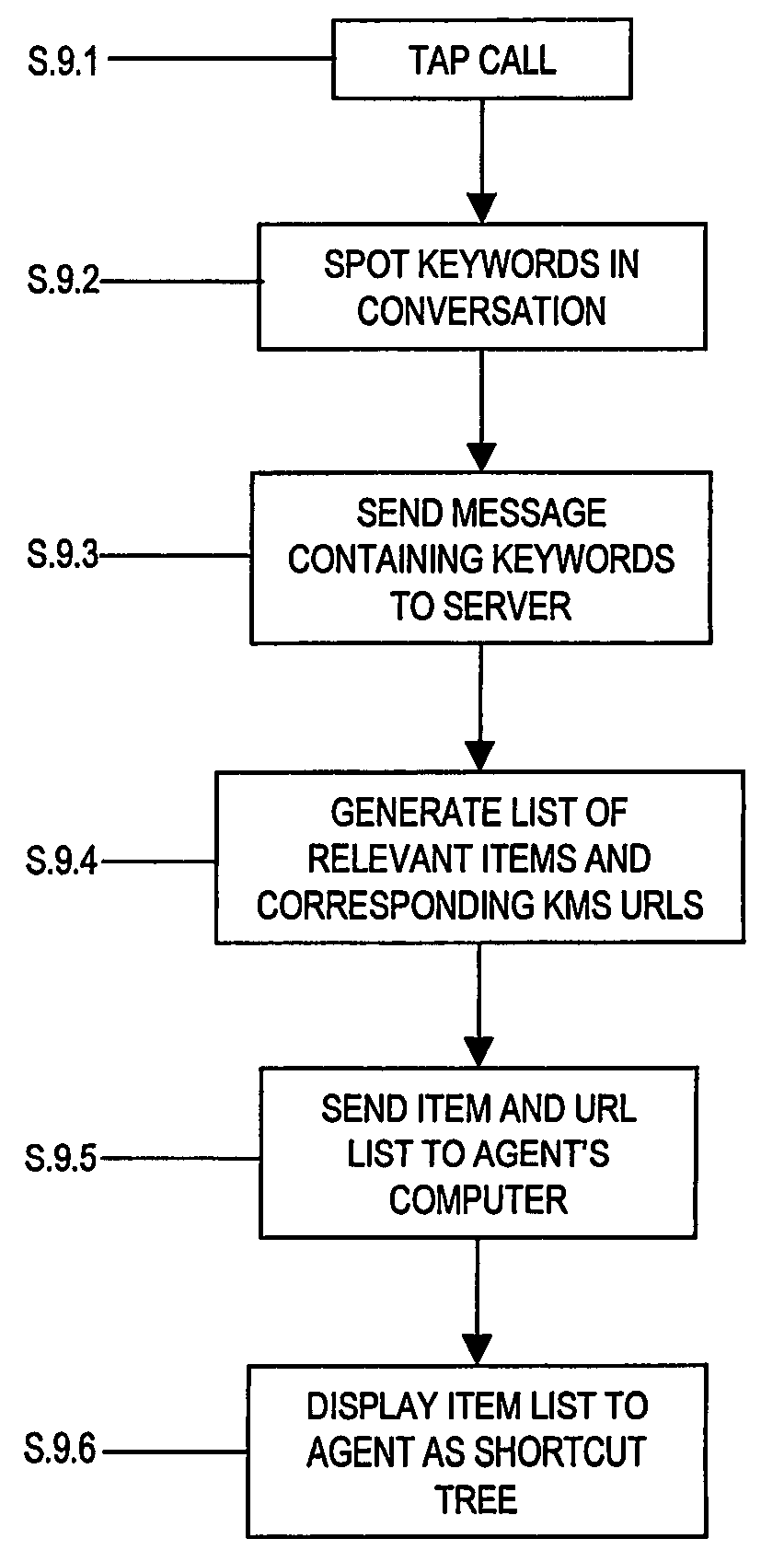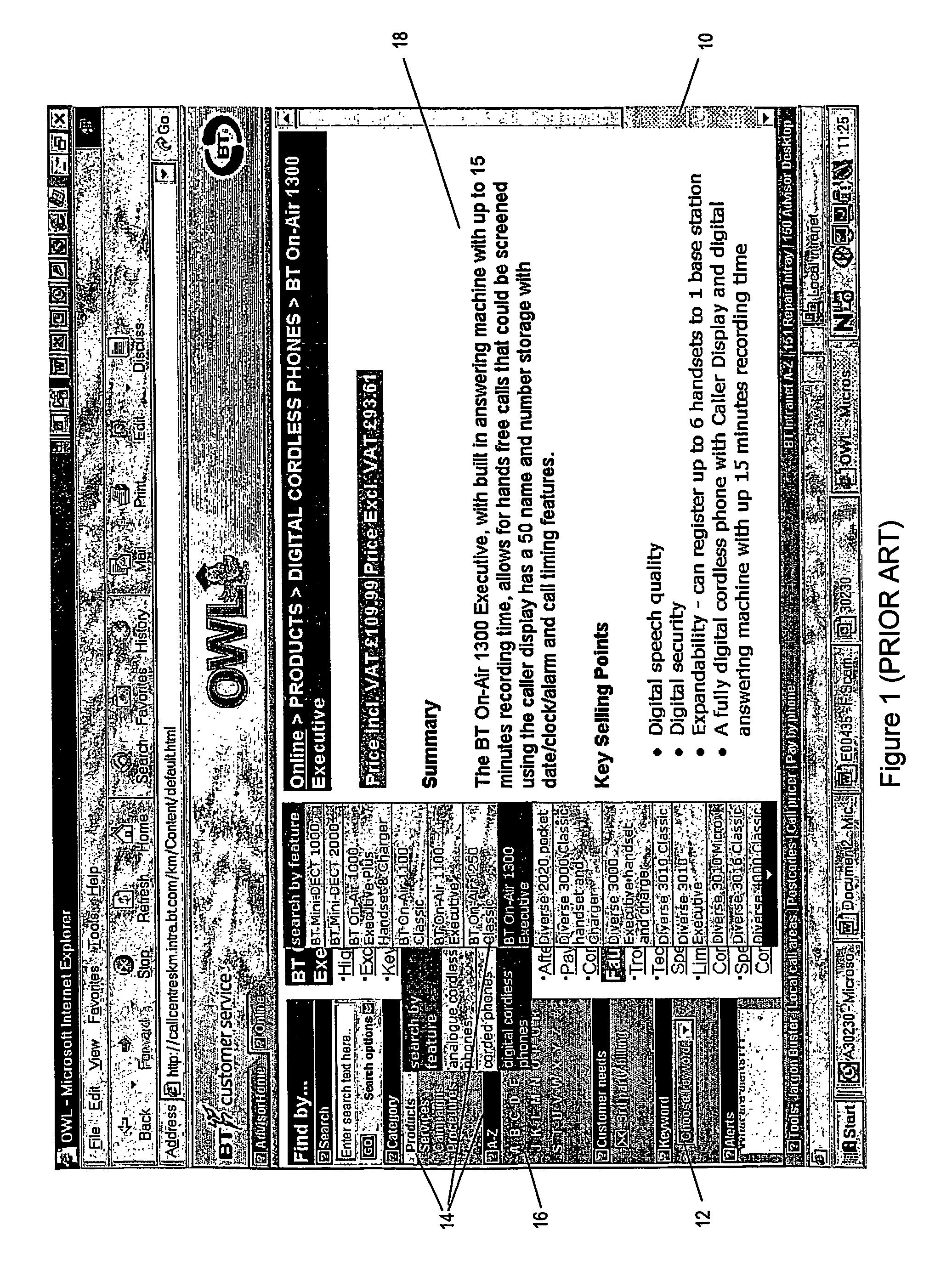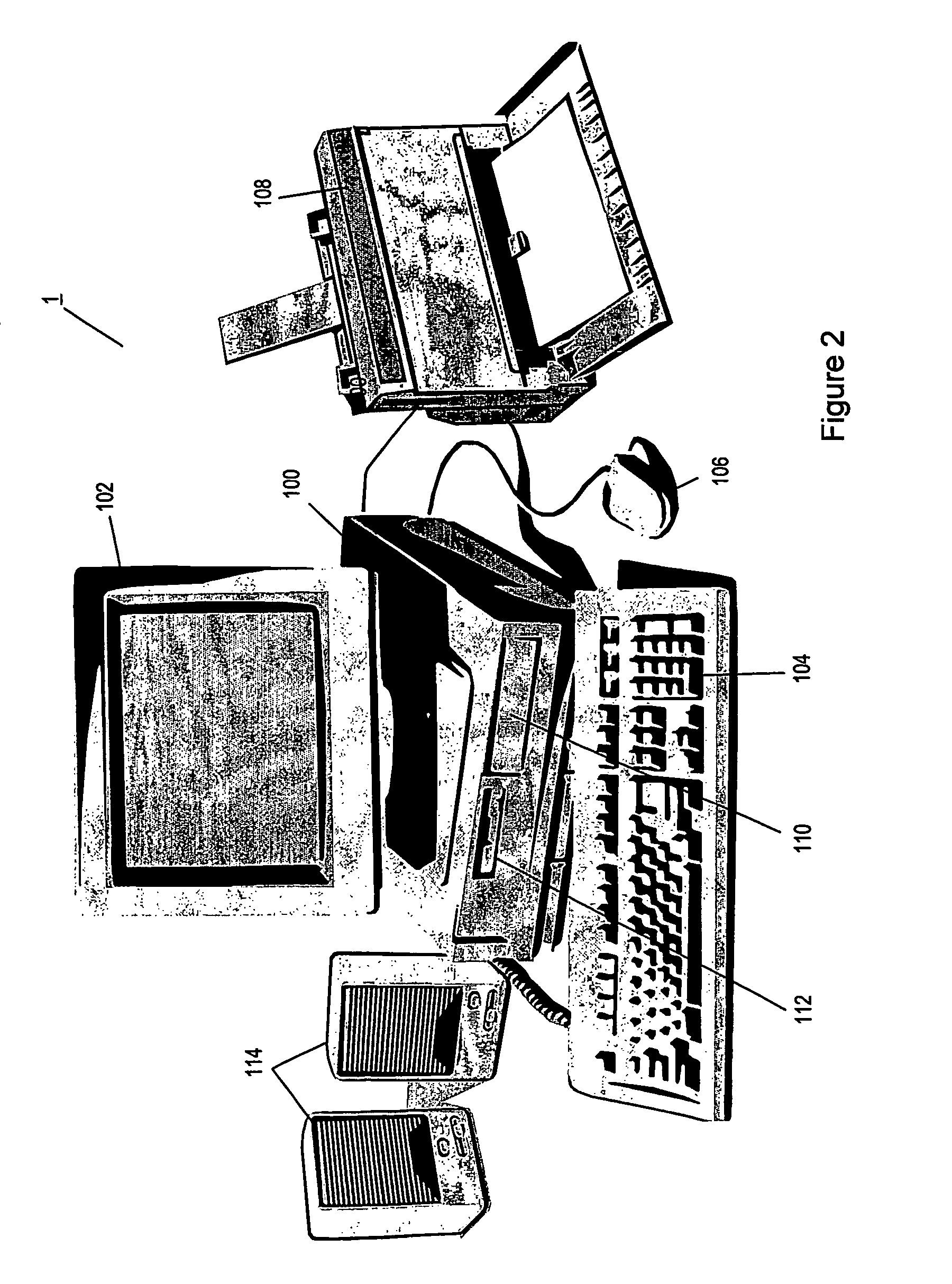Information provision for call centres
a technology for information provision and call centres, applied in the field of information provision for call centres, to achieve the effect of improving the technological and economic efficiency of the center
- Summary
- Abstract
- Description
- Claims
- Application Information
AI Technical Summary
Benefits of technology
Problems solved by technology
Method used
Image
Examples
first embodiment
[0090]The operation of the first embodiment is formally illustrated in FIG. 5. Here, at step 7.1 the voice platform 42 acts to tap into the communications channel established between the human agent 2 and a caller. Next, at step 7.2 the voice platform (by virtue of the speech recognition application installed thereon) analyses the voice signals on the tapped channel which comprise the conversation between the human agent and the caller, so as to spot keywords in the conversation.
[0091]Having spotted the keywords, a message containing the keywords is then sent to the knowledge management system client application at the users computer 1, wherein the keywords identified are displayed to the human agent 2 in the keyword display portion 12. The human agent may then select any of the displayed keywords to be input to the knowledge management system's search engine, which is preferably a standard web style search engine.
[0092]At step 7.4, with the human agent 2 having selected one or more...
second embodiment
[0118]As mentioned previously, within the description of the second embodiment by use of the term “keyword” we implicitly mean both keyphrases as well as keywords.
[0119]FIG. 8 illustrates a block diagram of the preferred embodiment of the present invention. Here, a human agent 2 employed in a call centre is provided with a general purpose computer 1, which has logical connections into a knowledge management system comprising a knowledge database 44. A knowledge management system client application is stored on the agent computer 1, which provides a web style display, having an information display portion 10, and an information short-cut display portion 84. Further provided is a speech recogniser application which is installed on either the agent computer 1, or another computer, and which acts as a voice platform 42 for the speech recogniser application. The voice platform 42 is arranged to listen to a communications channel such as a telephone line which is established between the h...
third embodiment
[0159]From observing the calls we have determined that the “problem identification” phase of the call is the period in which the majority of keywords are usually spoken and so is the phase in which the speech recogniser must be active. The other phases contain few if any keywords and so it is undesirable to have the speech recogniser active at these points. The problem to be solved by the invention is therefore of how to identify when the “problem identification” phase begins and ends since the duration of each phase varies significantly according to the nature of the caller and call, thus ensuring most cost effective use of expensive speech recognition resources.
[0160]Preferably, any mechanism that switches the recogniser on / off for the problem identification phase must require little or no manual intervention by the advisor since this will add to their cognitive load when dealing with the caller and invariably they will forget to switch the system on or off.
[0161]The invention acc...
PUM
 Login to View More
Login to View More Abstract
Description
Claims
Application Information
 Login to View More
Login to View More - R&D
- Intellectual Property
- Life Sciences
- Materials
- Tech Scout
- Unparalleled Data Quality
- Higher Quality Content
- 60% Fewer Hallucinations
Browse by: Latest US Patents, China's latest patents, Technical Efficacy Thesaurus, Application Domain, Technology Topic, Popular Technical Reports.
© 2025 PatSnap. All rights reserved.Legal|Privacy policy|Modern Slavery Act Transparency Statement|Sitemap|About US| Contact US: help@patsnap.com



